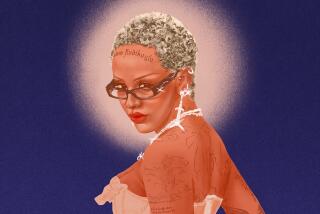Rap’s Rise Parallels History of Early Rock
- Share via
Given the many musical and sociological parallels between rap and early rock, it’s remarkable that rap--the dominant new pop sound of the ‘80s--was long viewed as the enemy by much of the rock community.
One reason for the suspicion was conditioning. Rock radio stations in the mid-1970s rarely played records by black musicians because--the theory went--their audience would mistake the records as disco at a time when an intense rock-vs.-disco war was raging.
The practice was absurd--based on thinking that underestimated the intelligence of the rock listener and treated black music as a stereotype. This virtual boycott of black artists taught a generation of fans--mostly white--to reject records by any black musician who courted a rock audience.
The first taste of rap for most pop fans was the Sugarhill Gang’s 1979 hit “Rapper’s Delight,” a lightweight novelty that left rock fans thinking of rap as little more than an offbeat cousin of the disco trend that was driving rock off Top 40 radio.
What outsiders didn’t realize in the early ‘80s was that rap music had a much stronger foundation than “Rapper’s Delight” suggested. Just as ‘50s teen-agers, black and white, embraced rock as a means of self-identity and expression, urban black teens in the early ‘80s adopted rap as a grass-roots way to express the aspirations and frustrations that were being ignored in a black music world as stagnant as the pop-rock mainstream.
But few rock fans saw this link in the early days of rap. The music--once defined as rhythmic talking over a funk beat--sounded alien. The vocals were recited rather than sung, and the backing tracks relied on a steady, aggressive rhythm with little of the guitar and drum sounds of rock.
The creative breakthrough for this New York-centered style was Grandmaster Flash & the Furious Five’s “The Message.” The stark 1982 tale of ghetto alienation illustrated that rap could be a powerful and passionate forum.
While “The Message” was a critical favorite, it didn’t dent the pop consciousness. The record that did the most to make rap welcome in the pop-rock community was Run-DMC’s 1986 remake of “Walk This Way,” the old Aerosmith hit.
Progress since then has been dramatic--an explosion of energy and imagination that has established rap as arguably the most vital new street-oriented sound in pop since the beginning of rock itself. While New York, which pioneered rap, continues to produce worthy new stars, the most compelling movements in rap at the decade’s end are centered in Los Angeles--in the humor and spunk of the Delicious Vinyl stable of artists, including Tone Loc and Young M.C., and in the urban gang imagery of N.W.A and Ice-T.
Though there is a strong anti-drug, pro-education message in much rap, there are also references in some records that are as troubling as street rage itself--moments tarnished by misogynistic, anti-gay, anti-police and racist attitudes.
When these issues are raised, the rap artists involved argue that the viewpoints in the songs--such as the aggressive gang imagery of N.W.A--are reflections of the reality of street life and attitudes.
Rap’s future is one of the most intriguing questions facing pop in the ‘90s. Can the raw music form maintain its street vitality in the face of growing commercial acceptance, or will it become a “faceless” victim of its own success--much as rock did in the first half of the ‘70s? Also, can it find a way to express social anger without resorting to social slander?
RELATED STORY: F5
More to Read
The biggest entertainment stories
Get our big stories about Hollywood, film, television, music, arts, culture and more right in your inbox as soon as they publish.
You may occasionally receive promotional content from the Los Angeles Times.










